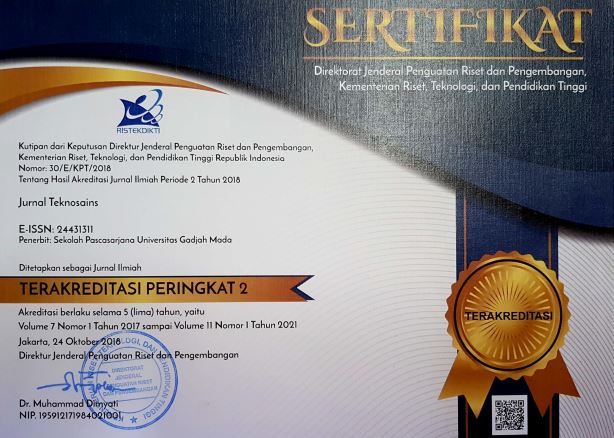Strategi pengelolaan pariwisata berkelanjutan di kawasan wisata alam sumber maron, kabupaten Malang
Agnes Caesarika Githanto Putri(1), Muhamad Muhamad(2*), Cafid Fandeli(3)
(1) Tourism Study Program, Postgraduate School UGM
(2) Tourism Study Program, Postgraduate School UGM
(3) Tourism Study Program, Postgraduate School UGM
(*) Corresponding Author
Abstract
Wisata Alam Sumber Maron is a tourist destination in Malang Regency which is currently experiencing a surge in tourists. In addition, there are problems with the conversion of land from plantations to developed land. Both of these problems have an impact on the quality of the environment in Wisata Alam Sumber Maron, causing the tourist destination area to be unsustainable. The purpose of this research is to analyze the management strategies that can be applied in Wisata Alam Sumber Maron. The data analysis used is an analysis of the carrying capacity of the environment to determine its physical factors, stakeholder analysis to determine social factors and analysis of travel costs to determine economic factors. Based on the method used, the final result is ha the effective carrying capacity at the Wisata Alam Sumber Maron is 179 people/day. This figure is then used as a guideline for strategy formulation.The management strategy is formulated using the 4 pillars of tourism method as stated in the Undang-Undang Number 10 of 2009 about Kepariwisataan, namely the tourism industry, destinations, marketing, and tourism institutions.
Keywords
Full Text:
PDFReferences
Anonim. 1995. Piagam Pariwisata Berkelanjutan. Jakarta: Kementrian Pariwisata.
Anonim. 2018. Data Curah Hujan Kecamatan Pagelaran 2009-2018. BMKG Karangkates. Malang.
Anonim. 2020. Kabupaten Malang Dalam Angka 2019. Kabupaten Malang: BPS
Arida, I Nyoman Sukma. 2015. Ekowisata: Pengembangan, Partisipasi Lokal dan Tantangan Ekowisata. Bali: Cakra Press.
Cifuentes, M. 1992. Tourism Principles and Practice. London: Longman Group.
Damanik, J., dan Weber, E. H.2006. Perencanaan Ekowisata, dari Teori Aplikasi. Pusat Studi Parwisata (PUSPAR) UGM. Yogyakarta: Andi.
Fandeli, C., dan Muhammad. 2009. Prinsip-prinsip Dasar Mengkonservasi Lanskap. Yogyakarta: Fakultas Kehutanan, Universitas Gadjah Mada.
Mutaqin, A., Z. 2017. Pariwisata di tahun 2017, Wisata Minat Khusus VS Wisata Massal. Jakarta: Wisata Halimun.
Reed M, Graves A, Dandy N, Posthumus H, Hubacek K, Morris J, Prell C, Quinn CH, Stringer LC. 2009. Who’s Nad Why? A Typology of Stakeholder Analysis Methods for Natural Resource Management. Journal of Environmental Management 90:1933-1949.
Riani,M.W. 2012. Mekanisme Hubungan Para Pihak Dalam Pengelolaan Wisata Alam di Kota Bandar Lampung dan sekitarnya Provinsi Lampung. Bogor: Institut Pertanian Bogor
Soemarwoto, Otto, 2004. Ekologi Lingkungan Hidup dan Pembangunan Edisi ke 10. Jakarta:Djambatan.
Undang-Undang Republik Indonesia No. 10 Tahun 2009 tentang Kepariwisataan Indonesia
Undang-Undang Republik Indonesia No. 26 Tahun 2007 tentang Penataan Ruang
Utomo, D. H. 2009. Meteorologi Klimatologi dalam studi Geografi. Malang: Universitas Negeri Malang Press.
Utomo,M., Rifai,E.,& Thahir,A.1993. Pembangunan dan Alih Fungsi Lahan.Lampung:Universitas Lampung
Article Metrics
Refbacks
- There are currently no refbacks.
Copyright (c) 2021 Agnes Caesarika Githanto Putri, Muhamad, Chafid Fandeli

This work is licensed under a Creative Commons Attribution-ShareAlike 4.0 International License.
Copyright © 2024 Jurnal Teknosains Submit an Article Tracking Your Submission
Editorial Policies Publishing System Copyright Notice Site Map Journal History Visitor Statistics Abstracting & Indexing









